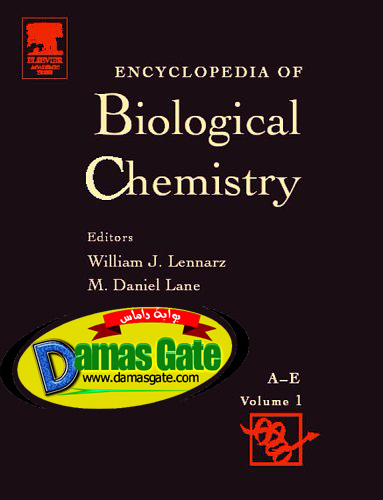
Written for a broad* cross-disciplinary audience* the Encyclopedia of Biological Chemistry addresses the fundamental discipline of biological chemistry underlying virtually all of the life sciences. This compilation of more than 500 different entries encompasses all aspects of biochemistry* as well as the extensions of this subject into the related fields of molecular biology* cell biology* genetics and biophysics. This comprehensive encyclopedia covers all areas of biological chemistry written by more than 500 selected international experts. Articles are generously illustrated including more than 800 images in four-color. Each entry contains a clear* concise review of the topic along with illustrations* a glossary of technical terms and a section for additional reading. Each entry further contains general background and term definitions as well as a comprehensive review of the current research in the field. Students* science journalists and scientists seeking a concise introduction to specific topics will appreciate the clear* tabular format of each entry.
Topology
Most, but not all, ABC proteins are ABC transporters.
Each of those molecules contains, or is associated to, one
or two cytoplasmic ATP-binding domains named nucleotide
binding domains (NBDs) (Figure 1) and one or two
transmembrane domains (TMDs) (Figure 2). Each TMD
comprises usually six
a-helix spans. Association of one
TMD to one NBD results in a half-size ABC transporter;
however, they are believed to function as homo- or
heterodimers so that the minimal functional organization
of an ABC transporter is considered to be TMD–NBD–
TMD–NBD or NBD–TMD–NBD–TMD. In eukaryotes,
two TMDs and two NBDs are often associated in
one single molecule called full-sized ABC transporter.
The topological relation between NBD(s) and TMDs is
variable (Figure 2). In bacteria two NBDs often associate
with two TMDs either as four single subunits encoded by
the same operon or in various combinations of fused
subunits. Association of other proteins may occur. The
most prominent associated bacterial protein is the
periplasmic solute-binding receptor, which in gramnegative
bacteria is found in the periplasm, and in
gram-positive bacteria is present often as a lipoprotein,
bound to the external membrane surface via electrostatic
interactions (Figure 3). The three domains of the bacterial
ABC uptake transporters: namely the periplasmic
binding receptor, the cytoplasmic NDB, and the membrane
TMD are believed to have arisen from a common
ancestral ABC transporter in which these three proteins
were already present. However, during evolution, the
sequence of the periplasmic solute-binding receptors
diverges more rapidly than that of the TMDs, while that
of NBDs is the least divergent. Thus, all NBDs
are homologous, but this is not true for the TMDs or
the receptors. Nevertheless, the phylogenetic clustering
patterns in bacterial ABC from different species are
generally the same for all three types of proteins, despite
their variable rate of evolution.
The topology of some eukaryotic ABC effluxers can
be complex as additional TM spans occur in some
systems (Figure 3) as well as extra cytoplasmic domains
of presumed regulatory function.
Download
*
